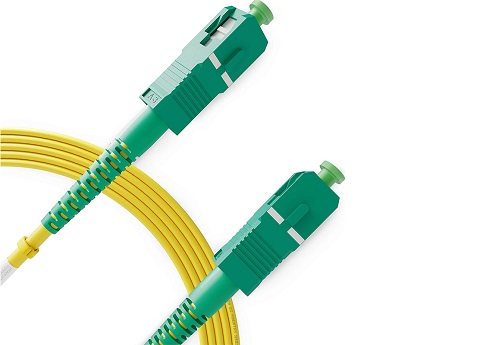Proper procedures must be followed to manage fiber optic patch cords for optimum performance. The routing principles for fiber patch cords are similar to the routing management principles for twisted pair cables; however, there are special considerations for fiber optics, and extra care is required in certain areas. Patch cords are more prone to damage than fiber optic cables, especially when bent.

Any changes or additions made since installation of the cabling infrastructure should also be documented. If the records are stored in a database, such as an automated infrastructure management system, a different screen can be displayed for each user. This screen should give you the information you need, including riser and horizontal fiber routing locations that serve specific areas and available fiber locations.
1. Check the design criteria and match the fiber jumpers
Make sure you understand the specs and design of fiber patch cords . Make sure your patch cords match the installed fiber optic cables, as different types of fiber optic cables cannot be mixed.
The first step in choosing the correct length of patch cord is to determine the best route between its connection points. Once you have determined the best route for the patch cord, find the desired length by adding horizontal and vertical distances.
When choosing jumper cables for cross-connection, avoid excessive slack and maintain a clean look. Tight or stretched jumpers can pull on the connector, and too much slack can complicate jumper management, making the panel more difficult to access.
Make sure you have the correct length of patch cords and the correct patch cord management accessories on the panel. On fiber patch panels, route the patch cords evenly on both sides of the vertical cable management channel to prevent overloading one side.
Be careful not to confuse jumpers with different core diameters. In addition, the bandwidth of the patch cord must be the same or higher than that of the wall patch cord. System performance with respect to distance is not guaranteed if lower rated jumpers are used. Connectors for different fiber optic standards are color-coded to easily avoid confusion.
2. Fiber jumper diameter
The core diameter of the fiber jumper must be the same as the diameter of the trunk cable. If a 62.5um patch cord is used together with a 50um trunk fiber optic cable, a larger attenuation loss will occur, and vice versa. Single-mode fiber patch cables should use fiber of the same "mode field diameter" as the trunk fiber.
3. Factory termination and field polishing of fiber patch cords
Factory-terminated flexible cords ensure optimum performance from fiber optic patch cords. Field polished wire may result in lower performance and varying quality.
4. Safety precautions and responsibilities when managing fiber jumpers
Lasers that transmit information through fiber optic cables can cause irreparable damage to the retina. Always avoid looking directly at powered fibers, and never connect microscopes or other magnification devices to powered fibers. Always wear appropriate safety goggles and be sure to cover unused ports.
5. Fiber jumper preparation
To minimize disconnection time, do as much preparation as possible before performing administrative activities. Find the port that must be connected or reconnected. Make sure technicians have clear information on what they need to do, including labeling information for the ports involved. It is critical to ensure that the patch cords are the correct type and quality, clean and in good condition.
Once the work on the panel has begun, it should be done immediately using best practices at each stage. Kinks, bumps, squeezing, and poor contact can greatly degrade the performance of fiber patch cords. The following factors are important to avoid these problems.
6. Pay attention to the bending radius of the fiber jumper
The minimum bend radius of fiber patch cords varies with cable diameter and should be verified before use. Exceeding the bend radius causes significant additional losses and adversely affects channel performance.
7. Pulling and stress of optical fiber jumper
Be careful not to apply too much force during the patching process. This can stress the jumpers and connectors, reducing their performance. If you need to pull the jumper too hard, it's not right. Find the problem and fix it before continuing.
8. Optical fiber jumper bundle
Bundling and tying wires keep the panels looking neat, but tying them tightly increases the risk of pinching. Tighten the cable ties to the point that the individual jumpers can rotate freely.
Related Blog
Related Products